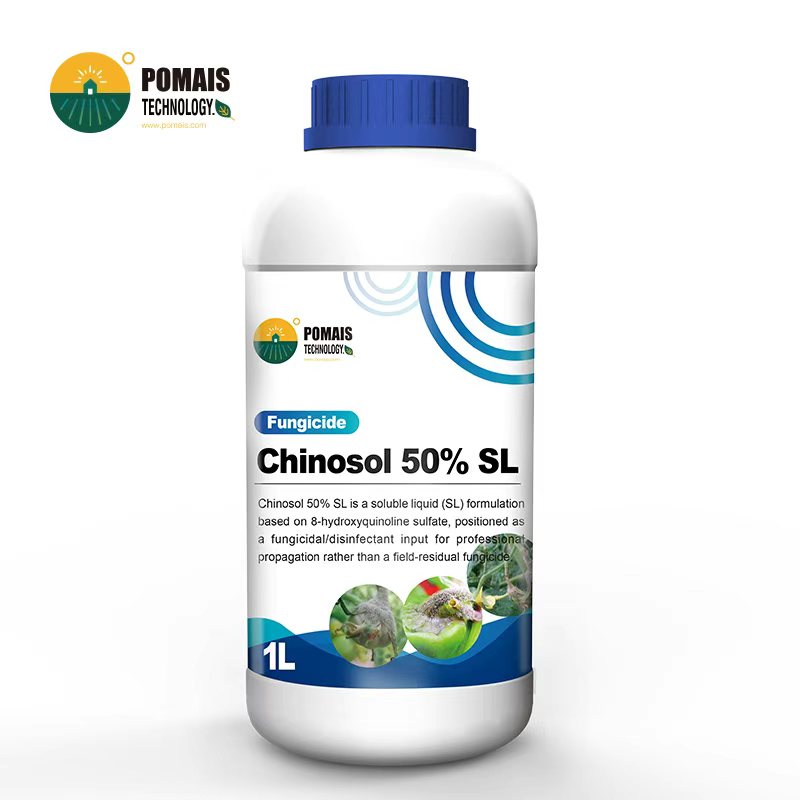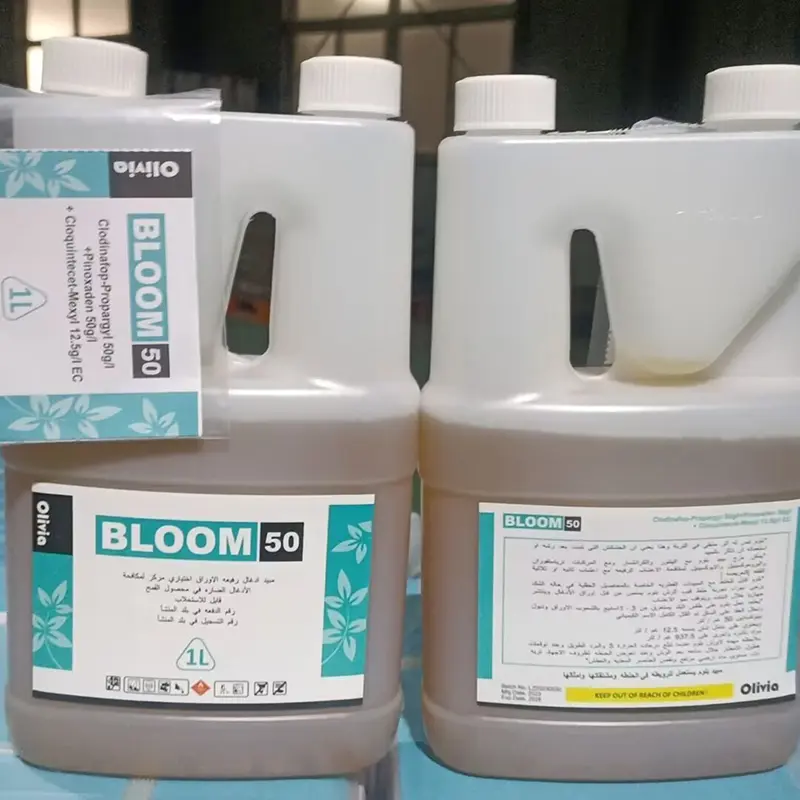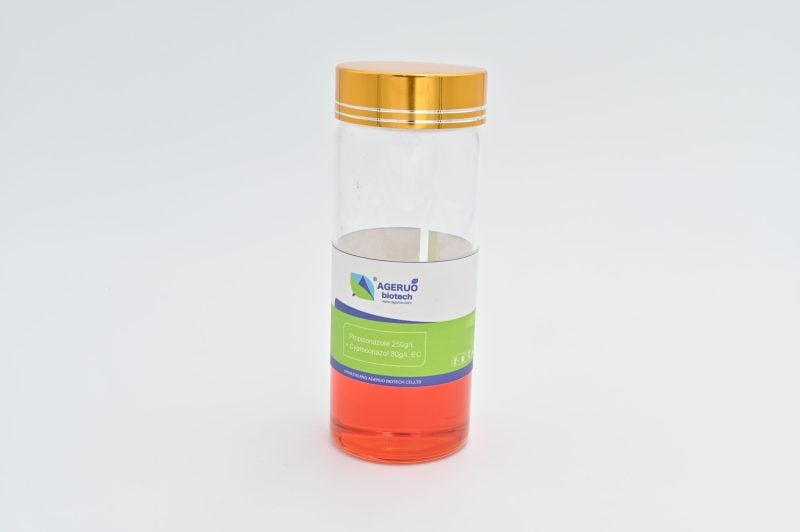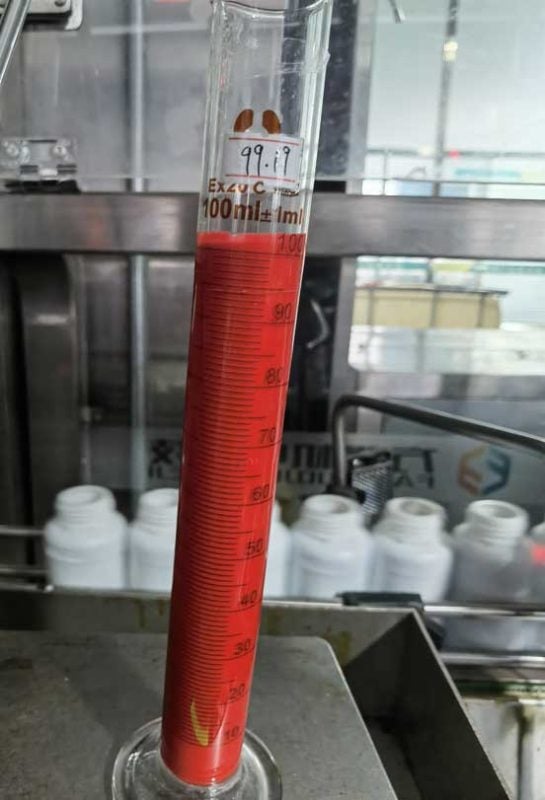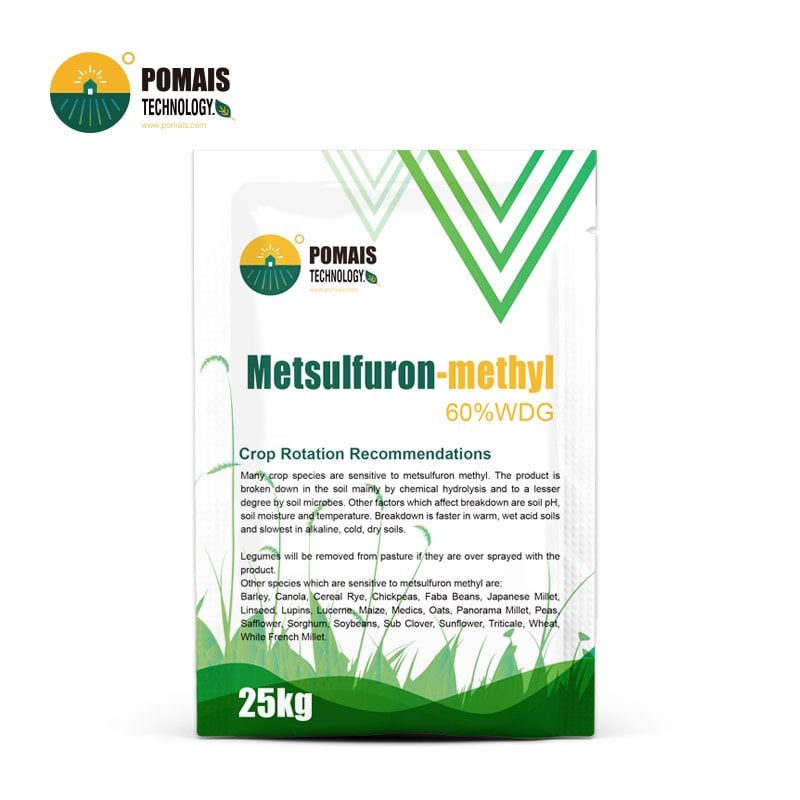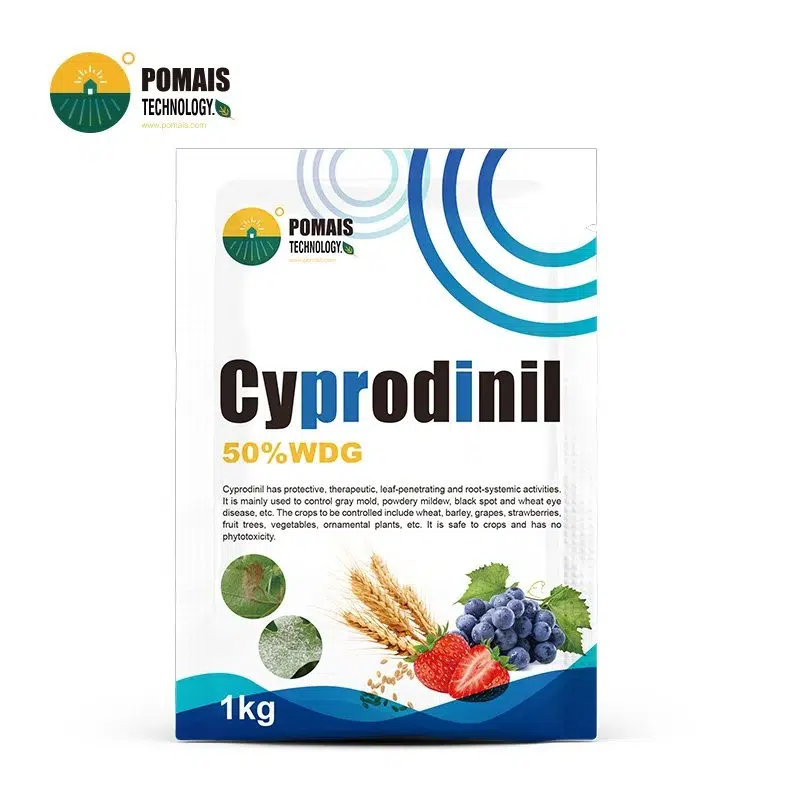Chinosol 50% SL | 8-Hydroxyquinoline Sulfate
You deploy Chinosol 50% SL to raise propagation hygiene and protect sensitive plant material in grafting and nursery workflows—always as per the approved local label.
Chinosol 50% SL is a soluble liquid (SL) based on 8-hydroxyquinoline sulfate. It is positioned as a fungicidal/disinfectant input for professional propagation, not a field residual fungicide.
- Vine and fruit nurseries: grafting and cutting workflows where Botrytis and handling contamination threaten take rates and finish.
- Vegetable and ornamental seedbeds/trays: propagation hygiene programs aimed at damping-off complexes and nursery sanitation.
- Hard-surface/tools (where permitted): integration into nursery hygiene SOPs (claims and sites are label-dependent).
Chinosol 50% SL dilutes quickly, prepares uniform baths/sprays, and supports consistent throughput on professional lines. The SL platform reduces prep variability and simplifies QA checks (clarity/appearance) at the point of use.
Uses, target organisms, contact policies, treated-material handling, and any re-use rules for baths are market-specific. Use only as per the approved local label. Professional personnel, correct PPE, storage, and disposal must follow SDS and local regulations.
- Designed for Professional Buyers & Bulk Orders
- This product is available for business purchase and large-scale distribution.
- We support custom packaging, labeling, and formulation to meet your market needs.
- Let’s build your brand together.

About Chinosol 50% SL | 8-Hydroxyquinoline Sulfate
About Chinosol 50% SL | 8-Hydroxyquinoline Sulfate
| Item | Specification |
|---|---|
| Product | Chinosol 50% SL |
| Active | 8-Hydroxyquinoline sulfate (a.k.a. oxyquinoline/8-quinolinol sulfate) |
| Content & Type | 50% soluble liquid (SL) for professional propagation hygiene |
| Intended Use | Fungicidal/disinfectant input for grafting, cuttings, seedbeds, nursery sanitation (label-dependent) |
| Appearance | Clear to white/off-white liquid; fast, uniform dilution |
| Identifiers | Common CAS used on labels: 134-31-6 (confirm per your registration dossier) |
| Packaging | 1 L / 5 L / 20 L / 200 L HDPE (market-dependent) |
| Documents | COA / SDS / TDS supplied per lot |
| Stewardship | Professional use only; treated materials handling and any bath re-use policies are label-dependent |
| Compliance | Use only as per the approved local label; PPE, storage, and disposal per SDS and local regulations |
Keep this SKU strictly scoped to 50% SL on the product page (avoid mixing TC/WP grades) to improve search clarity and conversion.
Chemistry & How It Works
A quinolinol-based antimicrobial that disrupts microbial viability and hygiene-critical biofilms in propagation workflows—use only as per the approved local label.
What it is
- 8-Hydroxyquinoline sulfate (the active in Chinosol 50% SL) is a quinolinol derivative with broad antimicrobial properties and metal-ion chelation behavior.
- The 50% SL format provides a fully soluble concentrate for quick, uniform dilution in baths or sprays, supporting consistent coverage on cuttings, scions, and nursery surfaces (where permitted).
How it acts
- Membrane & enzyme interference: interaction with microbial membranes and key enzymes undermines growth and survival in hygiene-sensitive steps (e.g., grafting benches, cutting lines).
- Chelation effect: binding of divalent cations (e.g., Fe²⁺/Cu²⁺) disrupts microbial metabolic processes and helps limit biofilm stability, improving the effectiveness of sanitation sequences.
- Fungicidal/disinfectant positioning: you use it as part of propagation hygiene—not as a field residual fungicide—to reduce inoculum pressure during handling and early development.
What it is not
- Not a nutrient or growth regulator.
- Not a field-residual control tool. Claims, organisms, contact policies, and treated-material rules are label-dependent.
Align all claims and use sites with your approved local label. Follow SDS for PPE, storage, and disposal. Do not publish operational concentrations or contact times on public pages.
Use Scenarios
Position Chinosol 50% SL in propagation hygiene steps where inoculum control protects take rates and finish—always as per the approved local label.
Vine & fruit nurseries — grafting and cutting workflows
You integrate Chinosol 50% SL into grafting and cutting stations to reduce Botrytis and handling-related contamination that threaten take rates and post-callus finish. The SL format supports quick, uniform bath or spray prep so crews can maintain cadence across benches. Build it into your SOP with clear entry/exit points (pre-graft handling, immediate post-assembly, or tool hygiene where permitted), visual QA checks on clarity/appearance, and documented changeover rules to avoid cross-contamination between blocks or cultivars. Align with climate control, sanitation of trays/liners, and staff hygiene to convert cleaner workflows into higher usable plant counts. Claims, organisms, and any tool/bench sanitation permissions are label-dependent.
Vegetables & ornamentals — seedbeds and trays
Where listed, you deploy Chinosol 50% SL in nursery seedbeds and plug trays to strengthen damping-off hygiene programs during sensitive early development. Your objectives are tighter emergence curves, fewer early culls, and more uniform lots entering hardening and dispatch. Standardize bath/spray preparation and in-process QA (appearance checks, batch logs), manage lot segregation, and verify compatibility with liners, media, and tray materials per SDS. Integrate with environmental set-points (temperature, irrigation frequency, airflow) and rotation of hygiene inputs only if permitted by the label; avoid off-label combinations or re-use policies that your registration does not allow.
Nursery hygiene — hard surfaces and tools (where permitted)
If your local label includes hard-surface or tool sanitation, fold Chinosol 50% SL into cleaning sequences for benches, shears, and handling fixtures. Define dwell/contact policies strictly by the label; gate access with signage, PPE, and drying protocols before re-use. Maintain logs for area, time, operator, and lot references to support audits. Keep chemical storage and waste handling compliant with SDS and local rules; never repurpose containers or discharge to drains. If your jurisdiction treats this use as a biocide claim, ensure artwork and wording align with the correct regulatory category.
Every claim—organisms, sites, materials, contact policies, and any bath re-use rules—is market-specific. Use only as per the approved local label. Do not publish operational concentrations or contact times on public pages.
Formulation & Handling (50% SL)
A fully soluble liquid you can dilute fast, verify visually, and run reliably in propagation hygiene SOPs—always as per the approved local label.
Solubility & bath preparation
- Chinosol 50% SL (8-hydroxyquinoline sulfate) dissolves uniformly for clear, consistent baths or sprays, reducing prep variability across shifts.
- Standardize make-up steps in your SOP: sequence of additions, water quality requirements, and agitation time—without publishing operational concentrations.
- Use dedicated measuring vessels and induction ports to prevent cross-contamination; record lot codes and prep timestamps for traceability.
Visual QA & in-process control
- Adopt appearance checks (clarity, color) at prep and at defined intervals; document bath condition alongside operator initials and work area.
- Replace or refresh baths according to your approved local label and internal hygiene policy; avoid off-label re-use practices.
Material & equipment compatibility
- Compatible with typical nursery materials (stainless, glass, many plastics); verify any site-specific elastomers, liners, or tray polymers against SDS guidance.
- Rinse lines, nozzles, and tools promptly after use; schedule clean-in-place to avoid residue build-up and biofilm harboring.
Storage & handling discipline
- Store sealed, cool, and dry, away from incompatible materials. Keep secondary containment and spill kits on hand.
- Limit handling to trained personnel using PPE per SDS and the approved label. Never repurpose empty containers; manage wastes under local regulations.
Claims, sites, material compatibility statements, and any bath re-use policies are label-dependent. Use only as per the approved local label. Do not publish operational concentrations or contact times on public pages.
Program Fit & Stewardship
Embed Chinosol 50% SL in your propagation hygiene SOP to reduce inoculum transfer while keeping operations audit-ready—always as per the approved local label.
Where it belongs in your SOP
- Position Chinosol 50% SL at hygiene checkpoints: pre-graft handling, immediate post-assembly, seedbed/tray preparation, and (where permitted) tool/bench sanitation.
- Define entry/exit criteria for each station (visual QA, bath condition, operator sign-off) so crews keep cadence without compromising hygiene.
- Treat it as a nursery/propagation input, not a field residual fungicide; align with climate control, irrigation discipline, and staff hygiene to convert sanitation into better take rates and finish.
Treated materials & segregation
- Mark treated materials clearly and keep them physically segregated from untreated stock; prevent backflow into clean zones.
- Use dedicated trays/liners and labeled racks for treated batches; enforce one-way movement through the work area.
People, records, and compliance
- Limit handling to trained personnel with PPE per SDS and the approved label; gate access with signage and color-coded tools.
- Maintain bath logs (lot codes, prep time, operator, area), appearance checks, and changeover records; archive with batch and dispatch data for traceability.
- Manage wastes and rinsates under local regulations; never repurpose containers.
Claims, sites, contact policies, and any bath re-use rules are label-dependent. Use only as per the approved local label. Do not publish operational concentrations or contact times on public pages.
QC & Stability
Outcome in one line: Each lot is release-tested, storage-robust, and fully traceable—so your propagation hygiene runs consistently across shifts.
Lot release (no public numeric limits)
- Assay/ID of 8-hydroxyquinoline sulfate; confirmation of active identity.
- Appearance & clarity in concentrate and after dilution; absence of visible insolubles.
- pH & specific gravity within registered spec; color index within QA window.
- Miscibility/clarity on dilution in representative water qualities.
- Storage robustness checks: suspensibility after idle holds; low foam tendency.
Stability program
- Accelerated & real-time stability supporting shelf-life claims and packaging compatibility.
- Freeze–thaw and elevated-temperature challenges with recovery verification.
- Periodic re-tests for clarity drift and pH creep; photostability screening as applicable.
Receiving & in-process QA
- Verify tamper evidence, label correctness, and lot codes; match COA before release.
- Run a quick clarity check on a small dilution; record operator, time, and water source.
- Maintain prep logs (lot, batch, area) and appearance checks at defined intervals.
Traceability & retention
- End-to-end lot traceability from inputs to finished packs.
- Retention samples archived per lot for the shelf-life period to support audits and investigations.
Compliance note: Storage, transport, and waste handling follow SDS and local regulations. Use only as per the approved local label.
OEM & Compliance
Outcome in one line: Private-label ready—brand-aligned artwork with regulatory fidelity from bottle to pallet.
Private label & artwork
- Multilingual labels (EN/ES/FR/AR/RU/PT, etc.), serialization/barcodes, optional QR e-leaflet.
- Artwork aligned to your brand system while preserving mandatory hazard, stewardship, and claim language.
Packaging configuration
- HDPE 1 L / 5 L / 20 L / 200 L with induction seal and tamper evidence.
- Export-grade cartons and pallet patterns optimized for container utilization; consistent tint/appearance for visual QA.
Regulatory alignment
- Claims (organisms, sites), contact policies, treated-material handling, and any bath re-use rules are label-dependent and may fall under agrochemical or biocide frameworks depending on market.
- Only trained personnel handle and apply; signage, PPE, and restricted-entry language implemented per label and SDS.
Documentation bundle
- COA / SDS / TDS per lot.
- On request: editable label/carton dielines, print-ready PDFs, and master data (SKU codes, dimensions, net/gross weights) for ERP onboarding.
FAQ
Q1. Is Chinosol 50% SL a fungicide or a disinfectant?
It is positioned for propagation hygiene as a fungicidal/disinfectant input. Exact claim wording is label-dependent by market.
Q2. Where does it fit operationally?
In grafting/cutting lines, seedbeds/trays, and (where permitted) hard-surface/tool sanitation within nursery SOPs—not as a field residual fungicide.
Q3. Which CAS should appear on our label?
Commonly 134-31-6 for 8-hydroxyquinoline sulfate; align with your registration dossier and local authority conventions.
Q4. Can baths be re-used across shifts?
Only as permitted by your approved local label and internal hygiene policy. Document appearance checks and changeover rules.
Q5. What materials is it compatible with?
Generally compatible with stainless, glass, and many nursery plastics. Verify site-specific elastomers/liners against the SDS.
Q6. What documents ship with each lot?
COA / SDS / TDS; OEM artwork and packaging specs are available on request.
Q7. How should it be stored?
Keep sealed, cool, and dry; segregate from incompatible materials. Follow SDS for spill control and disposal.
Request the specification pack for Chinosol 50% SL—COA/SDS/TDS templates, stability summary, label/carton mockups, and a packaging proposal.
To accelerate quoting, share your target markets, label languages, preferred pack sizes, annual forecast, and any required claim wording. We will confirm MOQ, lead time, palletization, and artwork timelines—finalized against your approved local label.
| Item | Specification |
|---|---|
| Product | Chinosol 50% SL |
| Active | 8-Hydroxyquinoline sulfate (a.k.a. oxyquinoline/8-quinolinol sulfate) |
| Content & Type | 50% soluble liquid (SL) for professional propagation hygiene |
| Intended Use | Fungicidal/disinfectant input for grafting, cuttings, seedbeds, nursery sanitation (label-dependent) |
| Appearance | Clear to white/off-white liquid; fast, uniform dilution |
| Identifiers | Common CAS used on labels: 134-31-6 (confirm per your registration dossier) |
| Packaging | 1 L / 5 L / 20 L / 200 L HDPE (market-dependent) |
| Documents | COA / SDS / TDS supplied per lot |
| Stewardship | Professional use only; treated materials handling and any bath re-use policies are label-dependent |
| Compliance | Use only as per the approved local label; PPE, storage, and disposal per SDS and local regulations |
Keep this SKU strictly scoped to 50% SL on the product page (avoid mixing TC/WP grades) to improve search clarity and conversion.
Chemistry & How It Works
A quinolinol-based antimicrobial that disrupts microbial viability and hygiene-critical biofilms in propagation workflows—use only as per the approved local label.
What it is
- 8-Hydroxyquinoline sulfate (the active in Chinosol 50% SL) is a quinolinol derivative with broad antimicrobial properties and metal-ion chelation behavior.
- The 50% SL format provides a fully soluble concentrate for quick, uniform dilution in baths or sprays, supporting consistent coverage on cuttings, scions, and nursery surfaces (where permitted).
How it acts
- Membrane & enzyme interference: interaction with microbial membranes and key enzymes undermines growth and survival in hygiene-sensitive steps (e.g., grafting benches, cutting lines).
- Chelation effect: binding of divalent cations (e.g., Fe²⁺/Cu²⁺) disrupts microbial metabolic processes and helps limit biofilm stability, improving the effectiveness of sanitation sequences.
- Fungicidal/disinfectant positioning: you use it as part of propagation hygiene—not as a field residual fungicide—to reduce inoculum pressure during handling and early development.
What it is not
- Not a nutrient or growth regulator.
- Not a field-residual control tool. Claims, organisms, contact policies, and treated-material rules are label-dependent.
Align all claims and use sites with your approved local label. Follow SDS for PPE, storage, and disposal. Do not publish operational concentrations or contact times on public pages.
Use Scenarios
Position Chinosol 50% SL in propagation hygiene steps where inoculum control protects take rates and finish—always as per the approved local label.
Vine & fruit nurseries — grafting and cutting workflows
You integrate Chinosol 50% SL into grafting and cutting stations to reduce Botrytis and handling-related contamination that threaten take rates and post-callus finish. The SL format supports quick, uniform bath or spray prep so crews can maintain cadence across benches. Build it into your SOP with clear entry/exit points (pre-graft handling, immediate post-assembly, or tool hygiene where permitted), visual QA checks on clarity/appearance, and documented changeover rules to avoid cross-contamination between blocks or cultivars. Align with climate control, sanitation of trays/liners, and staff hygiene to convert cleaner workflows into higher usable plant counts. Claims, organisms, and any tool/bench sanitation permissions are label-dependent.
Vegetables & ornamentals — seedbeds and trays
Where listed, you deploy Chinosol 50% SL in nursery seedbeds and plug trays to strengthen damping-off hygiene programs during sensitive early development. Your objectives are tighter emergence curves, fewer early culls, and more uniform lots entering hardening and dispatch. Standardize bath/spray preparation and in-process QA (appearance checks, batch logs), manage lot segregation, and verify compatibility with liners, media, and tray materials per SDS. Integrate with environmental set-points (temperature, irrigation frequency, airflow) and rotation of hygiene inputs only if permitted by the label; avoid off-label combinations or re-use policies that your registration does not allow.
Nursery hygiene — hard surfaces and tools (where permitted)
If your local label includes hard-surface or tool sanitation, fold Chinosol 50% SL into cleaning sequences for benches, shears, and handling fixtures. Define dwell/contact policies strictly by the label; gate access with signage, PPE, and drying protocols before re-use. Maintain logs for area, time, operator, and lot references to support audits. Keep chemical storage and waste handling compliant with SDS and local rules; never repurpose containers or discharge to drains. If your jurisdiction treats this use as a biocide claim, ensure artwork and wording align with the correct regulatory category.
Every claim—organisms, sites, materials, contact policies, and any bath re-use rules—is market-specific. Use only as per the approved local label. Do not publish operational concentrations or contact times on public pages.
Formulation & Handling (50% SL)
A fully soluble liquid you can dilute fast, verify visually, and run reliably in propagation hygiene SOPs—always as per the approved local label.
Solubility & bath preparation
- Chinosol 50% SL (8-hydroxyquinoline sulfate) dissolves uniformly for clear, consistent baths or sprays, reducing prep variability across shifts.
- Standardize make-up steps in your SOP: sequence of additions, water quality requirements, and agitation time—without publishing operational concentrations.
- Use dedicated measuring vessels and induction ports to prevent cross-contamination; record lot codes and prep timestamps for traceability.
Visual QA & in-process control
- Adopt appearance checks (clarity, color) at prep and at defined intervals; document bath condition alongside operator initials and work area.
- Replace or refresh baths according to your approved local label and internal hygiene policy; avoid off-label re-use practices.
Material & equipment compatibility
- Compatible with typical nursery materials (stainless, glass, many plastics); verify any site-specific elastomers, liners, or tray polymers against SDS guidance.
- Rinse lines, nozzles, and tools promptly after use; schedule clean-in-place to avoid residue build-up and biofilm harboring.
Storage & handling discipline
- Store sealed, cool, and dry, away from incompatible materials. Keep secondary containment and spill kits on hand.
- Limit handling to trained personnel using PPE per SDS and the approved label. Never repurpose empty containers; manage wastes under local regulations.
Claims, sites, material compatibility statements, and any bath re-use policies are label-dependent. Use only as per the approved local label. Do not publish operational concentrations or contact times on public pages.
Program Fit & Stewardship
Embed Chinosol 50% SL in your propagation hygiene SOP to reduce inoculum transfer while keeping operations audit-ready—always as per the approved local label.
Where it belongs in your SOP
- Position Chinosol 50% SL at hygiene checkpoints: pre-graft handling, immediate post-assembly, seedbed/tray preparation, and (where permitted) tool/bench sanitation.
- Define entry/exit criteria for each station (visual QA, bath condition, operator sign-off) so crews keep cadence without compromising hygiene.
- Treat it as a nursery/propagation input, not a field residual fungicide; align with climate control, irrigation discipline, and staff hygiene to convert sanitation into better take rates and finish.
Treated materials & segregation
- Mark treated materials clearly and keep them physically segregated from untreated stock; prevent backflow into clean zones.
- Use dedicated trays/liners and labeled racks for treated batches; enforce one-way movement through the work area.
People, records, and compliance
- Limit handling to trained personnel with PPE per SDS and the approved label; gate access with signage and color-coded tools.
- Maintain bath logs (lot codes, prep time, operator, area), appearance checks, and changeover records; archive with batch and dispatch data for traceability.
- Manage wastes and rinsates under local regulations; never repurpose containers.
Claims, sites, contact policies, and any bath re-use rules are label-dependent. Use only as per the approved local label. Do not publish operational concentrations or contact times on public pages.
QC & Stability
Outcome in one line: Each lot is release-tested, storage-robust, and fully traceable—so your propagation hygiene runs consistently across shifts.
Lot release (no public numeric limits)
- Assay/ID of 8-hydroxyquinoline sulfate; confirmation of active identity.
- Appearance & clarity in concentrate and after dilution; absence of visible insolubles.
- pH & specific gravity within registered spec; color index within QA window.
- Miscibility/clarity on dilution in representative water qualities.
- Storage robustness checks: suspensibility after idle holds; low foam tendency.
Stability program
- Accelerated & real-time stability supporting shelf-life claims and packaging compatibility.
- Freeze–thaw and elevated-temperature challenges with recovery verification.
- Periodic re-tests for clarity drift and pH creep; photostability screening as applicable.
Receiving & in-process QA
- Verify tamper evidence, label correctness, and lot codes; match COA before release.
- Run a quick clarity check on a small dilution; record operator, time, and water source.
- Maintain prep logs (lot, batch, area) and appearance checks at defined intervals.
Traceability & retention
- End-to-end lot traceability from inputs to finished packs.
- Retention samples archived per lot for the shelf-life period to support audits and investigations.
Compliance note: Storage, transport, and waste handling follow SDS and local regulations. Use only as per the approved local label.
OEM & Compliance
Outcome in one line: Private-label ready—brand-aligned artwork with regulatory fidelity from bottle to pallet.
Private label & artwork
- Multilingual labels (EN/ES/FR/AR/RU/PT, etc.), serialization/barcodes, optional QR e-leaflet.
- Artwork aligned to your brand system while preserving mandatory hazard, stewardship, and claim language.
Packaging configuration
- HDPE 1 L / 5 L / 20 L / 200 L with induction seal and tamper evidence.
- Export-grade cartons and pallet patterns optimized for container utilization; consistent tint/appearance for visual QA.
Regulatory alignment
- Claims (organisms, sites), contact policies, treated-material handling, and any bath re-use rules are label-dependent and may fall under agrochemical or biocide frameworks depending on market.
- Only trained personnel handle and apply; signage, PPE, and restricted-entry language implemented per label and SDS.
Documentation bundle
- COA / SDS / TDS per lot.
- On request: editable label/carton dielines, print-ready PDFs, and master data (SKU codes, dimensions, net/gross weights) for ERP onboarding.
FAQ
Q1. Is Chinosol 50% SL a fungicide or a disinfectant?
It is positioned for propagation hygiene as a fungicidal/disinfectant input. Exact claim wording is label-dependent by market.
Q2. Where does it fit operationally?
In grafting/cutting lines, seedbeds/trays, and (where permitted) hard-surface/tool sanitation within nursery SOPs—not as a field residual fungicide.
Q3. Which CAS should appear on our label?
Commonly 134-31-6 for 8-hydroxyquinoline sulfate; align with your registration dossier and local authority conventions.
Q4. Can baths be re-used across shifts?
Only as permitted by your approved local label and internal hygiene policy. Document appearance checks and changeover rules.
Q5. What materials is it compatible with?
Generally compatible with stainless, glass, and many nursery plastics. Verify site-specific elastomers/liners against the SDS.
Q6. What documents ship with each lot?
COA / SDS / TDS; OEM artwork and packaging specs are available on request.
Q7. How should it be stored?
Keep sealed, cool, and dry; segregate from incompatible materials. Follow SDS for spill control and disposal.
Request the specification pack for Chinosol 50% SL—COA/SDS/TDS templates, stability summary, label/carton mockups, and a packaging proposal.
To accelerate quoting, share your target markets, label languages, preferred pack sizes, annual forecast, and any required claim wording. We will confirm MOQ, lead time, palletization, and artwork timelines—finalized against your approved local label.
Related Products
Latest News

